The Power Of A High Fiber Diet Plan For Caregiver Health
Learn the benefits of a high-fiber diet plan designed, to enhance energy and vitality and support the health of caregivers on the go.
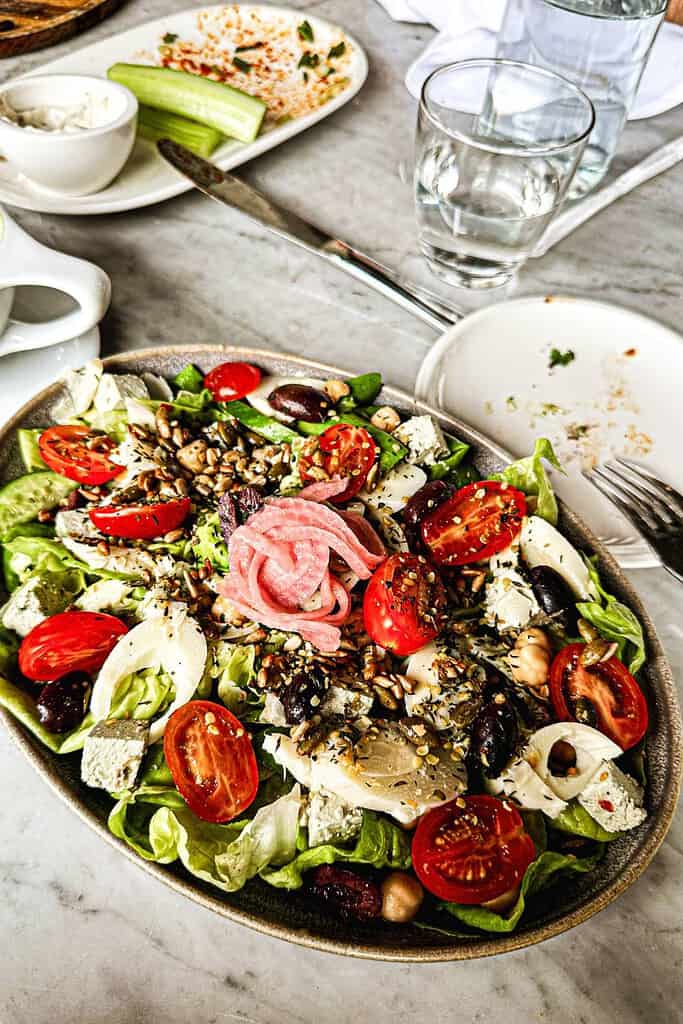
There are many advantages to adopting a high-fiber diet plan, a plan that is designed to increase energy reserves and fortify caregivers in delivering attentive and effective care to the ones they love.
The role of being a caregiver is demanding and it requires both physical stamina and mental clarity.
When I am busy caring for Doug who lives with Parkinson’s disease, or working with clients as a Lifestyle Medicine Nurse and Health Coach, it can be easy to skip meals or grab something to fill the void, something that is not so healthy.
Yet, when I am not eating properly and taking care of my own health and wellness, my energy drops, I find I get tired and cranky more readily, and either the waterworks of tears come out or the pity party begins.
One simple yet powerful way to ensure energy levels are sustained throughout your busy caregiver day is by incorporating fiber into your diet.
Fiber is a nutrient that often gets overshadowed by protein and fat but it is a potent nutrient for sustained energy, mental clarity, and long-term health.
Once I started focusing on fiber and increased it in my daily diet, I found it helped to significantly boost my energy levels, stabilized my mood throughout the day, and enhanced my mental focus and clarity.
Understanding Fiber
Fiber is a type of carbohydrate, found in plant-based foods, that cannot be digested by the body.
It is sometimes called roughage and unlike protein, carbohydrates, and fats, which the body can break down and absorb, fiber does not break down and passes through our digestive system and out of the body.
2 Types of Fiber
There are two types of fiber – soluble and insoluble fiber. Each has its own specific health benefits.
Soluble fiber. This type of fiber dissolves in water to form a gel-like substance, and it helps with lowering blood pressure, cholesterol, and blood sugar levels. Here are some examples of soluble high-fiber foods.
- Oats
- Beans
- Legumes
- Barley
- Peas
- Apples
- Carrots
- Oranges
- Lemons
- Chia seeds
Insoluble Fiber. This dietary fiber increases the bulk of our stool and helps motility, the movement of broken-down food through the gastrointestinal tract. Here are examples of insoluble foods to include in your high-fiber diet plan.
- Nuts
- Beans
- Whole grains
- Cauliflower
- Green beans
- Potatoes
To gain the greatest benefits, it is important to eat a variety of high-fiber foods.
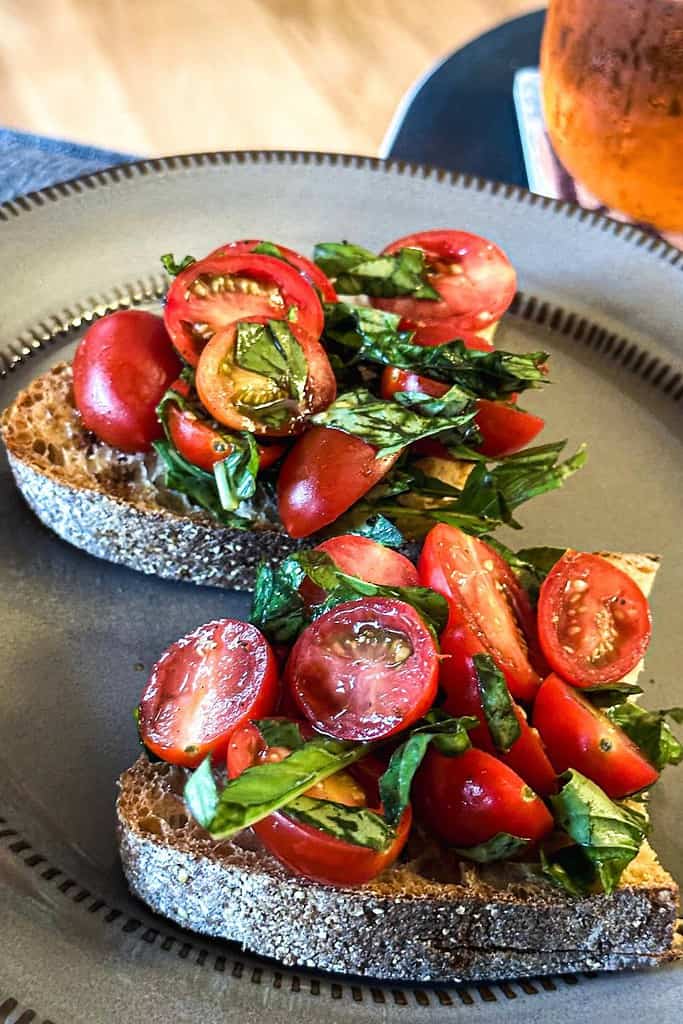
Benefits Of A High-Fiber Diet Plan
A diet rich in fiber provides many benefits.
Digestive Health. Fiber helps maintain a healthy digestive system by promoting regular bowel movements and preventing constipation. It also supports the growth of healthy bacteria in the gut.
Fiber increases the size of our stool, which helps move the stool along and more easily pass through the large intestine and the rest of our gut, decreasing constipation issues.
In reverse, if you are having loose, watery stools, fiber can help solidify the stool by absorbing water and adding bulk to the stool.
Heart Health. Fiber can help to lower cholesterol and blood pressure as well as control blood sugar levels, which all help to reduce the risk of heart disease.
Eating enough fiber, such as oats, beans, and flaxseed helps to lower our low-density lipoprotein (LDL) cholesterol, which in turn helps lower our overall total blood cholesterol levels.
Eating plenty of fiber, more specifically soluble fiber, helps slow the absorption of sugar into the bloodstream, improving blood sugar levels. A healthy high-fiber meal plan can help reduce the risk of type 2 diabetes.
Weight Management. Foods high in fiber help us feel full longer, which can help with weight loss and maintaining a healthy weight.
Foods high in fiber also take longer to eat and are less energy-dense, which means they have fewer calories per serving.
Longevity. Research suggests a diet high in fiber reduces our risk of cancer including esophageal, colorectal, gastric, breast, endometrial, ovarian, renal cell, prostate, and pancreatic cancers.
How Much Fiber Do We Need?
According to the Dietary Guidelines for Americans 2020-2025, most men and women do not get enough fiber in their daily diet.
Over 90% of women and 97% of men are not eating the recommended dietary fiber intake.
The recommended amount of fiber is 14 grams per every 1000 calories (14g/1000kcal). Here is the recommended daily amount of fiber to reach depending on age.
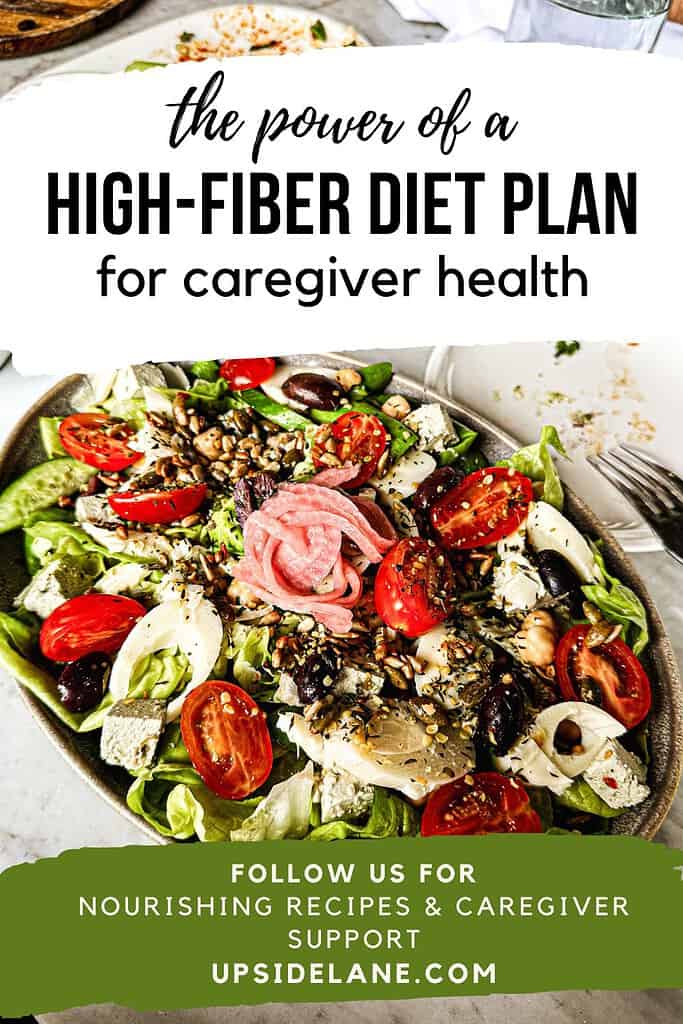
- 14-18 years old
- Female – 25 grams
- Male – 31 grams
- 19-30 years old
- Female – 28 grams
- Male – 34 grams
- 31-50 years old
- Female – 25 grams
- Male – 31 grams
- 51+ years old
- Female – 22 grams
- Male – 28 grams
It is important to increase your fiber intake gradually to avoid bloating and make sure to drink plenty of water to prevent digestive discomfort.
5 Easy Ways To Increase Fiber Intake
Incorporating a high-fiber diet plan into your day does not have to be complicated. Here are some simple tips to help get you started.
- Morning Strong. Start your day out right by choosing a whole grain cereal like oatmeal that is topped with some fresh fruit like raspberries, strawberries, and sliced bananas.
Pro Tip: Sprinkle a tablespoon of ground flax seeds or chia or hemp seeds for an easy fiber boost! - Power-Packed Lunches. Don’t shy away from a sandwich made with whole grain bread, versus white bread, with hummus, leafy greens, and tomatoes included. Add plenty of vegetables or a hearty salad with beans on the side, and you have yourself not only a fibrous-rich, nutrient-dense meal but one that is incredibly delicious too.
- Fiber-Rich Dinners. When making dinner, focus on fiber-rich foods such as brown rice, quinoa, barley, or some other type of whole grain. Also, consider whole wheat pasta with a rich red or pesto sauce. Add lots of leafy greens and colorful vegetables to your dish for a super delicious meal filled with fiber.
- Smart Snacks. It is important to keep high-fiber snacks nearby in case of munchies. High-fiber snacks include nuts, seeds, chia seed pudding, raw veggies and hummus, green smoothies, fresh fruit, and whole grain crackers.
- Fiber Across Meals. Spread out your fiber intake, and aim to eat fiber with every meal.
Shopping List Essentials: Fiber-Rich Foods
Next time you go to the grocery store, stock up on these high-fiber-rich foods.
Nuts: Almonds, walnuts, pecans, cashews, macadamia
Seeds: pumpkin, sunflower, hemp, flax, chia
Beans, peas, and lentils: black beans, red or white beans, kidney beans, pinto beans, green peas, brown, red, or yellow lentils
Whole grains: Brown rice, barley, quinoa, farro, cous cous, whole wheat pasta
Vegetables: Leafy greens (kale, arugula, spinach), broccoli, Brussels sprouts, asparagus, carrots, peppers, potatoes, squash
Fruit: Berries, apples, pears, cherries, peaches, plums, nectarines
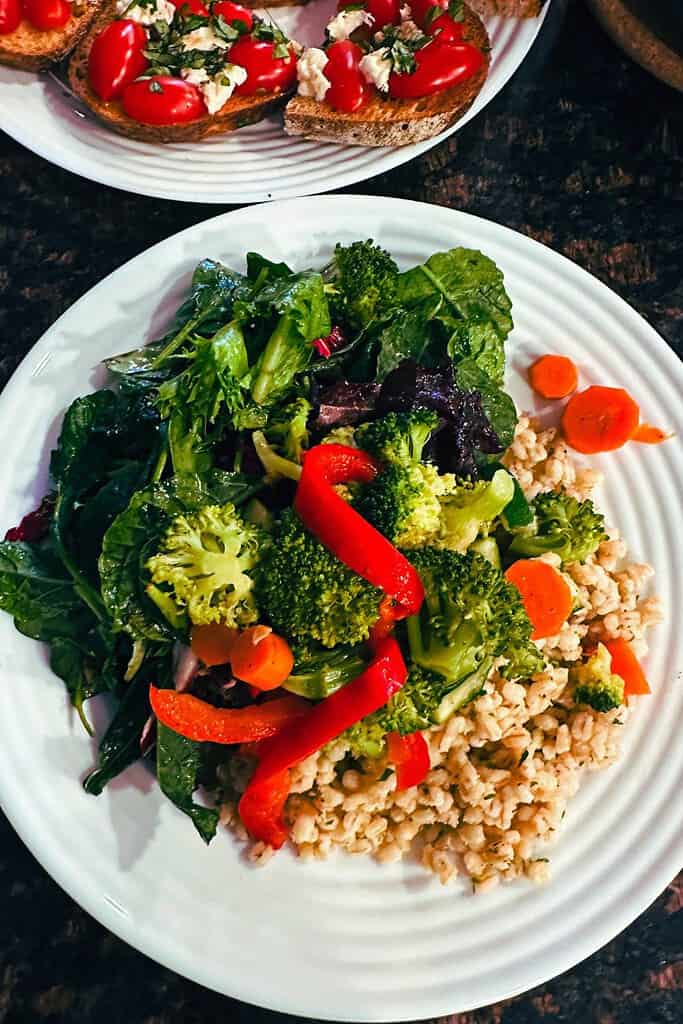
Tips For A Successful High-Fiber Diet Plan
Keep low-fiber foods to a minimum, like meat, fish, dairy, eggs, processed foods and snacks, fruit juices, and refined grains like bread, and pasta.
Stay hydrated and drink plenty of water throughout the day to help fiber move smoothly through your digestive tract.
Combine healthy eating habits with regular physical activity for overall health and vitality.
The 5:1 rule works great when you are looking to buy high-fiber foods at the grocery store.
On the nutrition label, look at the total carbohydrate grams and fiber grams. Divide the carbohydrate grams by the dietary fiber grams. If the ratio is less than or equal to 5:1 you are good to go!
If the ratio is more than 5:1, then steer clear and choose something with more fiber.
Consult a registered dietitian if necessary for more personalized guidance on incorporating fiber into the diet, especially if you have specific medical conditions.
A High-Fiber Diet Plan For Caregiver Energy
By prioritizing a high-fiber diet plan and eating fiber-rich foods like whole grains, fruits, vegetables, and legumes, caregivers can sustain their energy levels and support their overall health.
Whether you are preparing high-fiber dinners or enjoying fiber-packed snacks, every choice contributes to your overall well-being.
With a balanced diet and healthy habits, caregivers can continue to provide excellent care while maintaining their own vitality and strength.
Small changes today can lead to long-term benefits for both you and your loved ones.
Embrace the power of fiber and discover how it can transform your caregiver journey for the better!
Delicious High-Fiber Recipes
- Instant Pot Oatmeal: Batch Cooking For Busy Caregivers
- No Oil Sauteed White Beans and Swiss Chard Greens
- Vegan Split Pea Anti-Inflammatory Soup Recipe (no oil)
- Refreshing Pinto Bean Salad: Healthy & Easy To Make
- The Best Vegan Steel Cut Oatmeal Cookies Recipe EVER!
Additional Support For Caregiver Health
Let’s Connect
I hope you enjoyed this article on incorporating a high-fiber diet plan into your caregiving days.
Fiber is not one of the most talked about nutrients, like fat, protein, or total carbs, but it is just as imperative for overall health and longevity, for anyone, not just caregivers but especially for you because of the energy needed to move about your days.
Let me know how you get fiber into your diet. What are some of your own personal tips and tricks for incorporating fiber into your daily life? You can respond in the comment section below.
Please consider sharing this article with friends and family, or anyone you feel would find it beneficial.
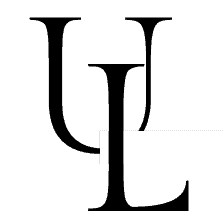
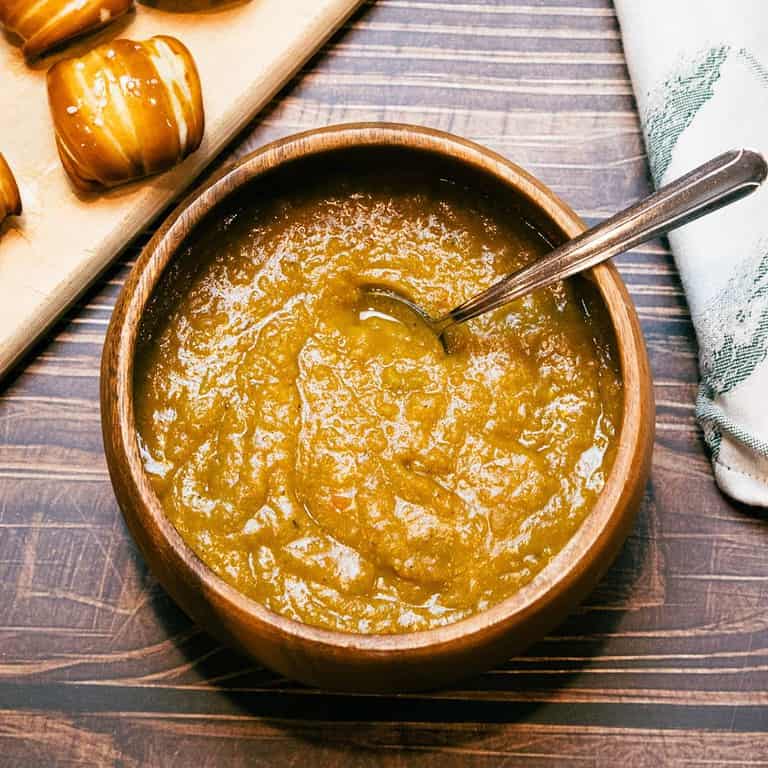
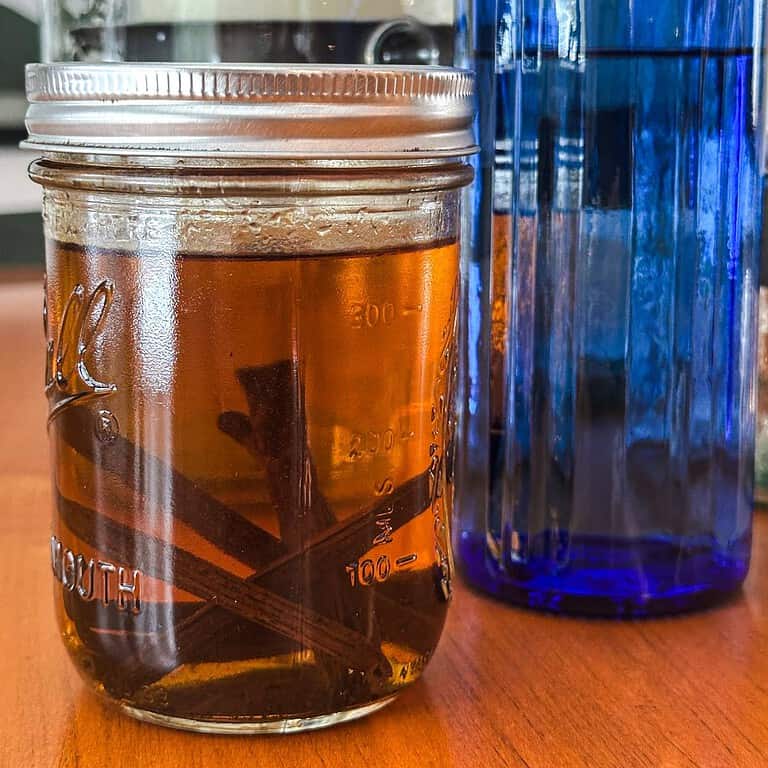


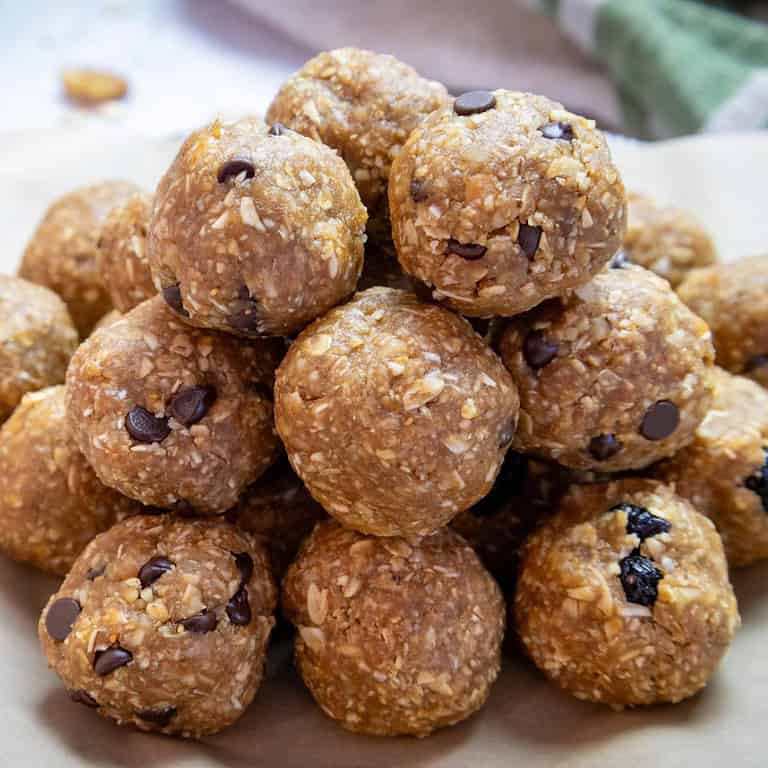

Great post! I went into early menapause & keeping an eye on my fiber totally helps with my hot flashes!
Yes, you are correct! Research shows a diet high in fiber and low in saturated fats, and of course eliminating the processed junk food DOES really help menopausal symptoms. A high-powered fan never hurts either…! Thank you for your support. Love hearing from my readers.
Great article! Keep preaching it! Everyone is worried about carbs, fats, protein and the latest diet fads. They should be worried about whole foods and fiber! The research supports it! Keep educating people. This world needs it!
Thank you, and YES I certainly will. Appreciate your support.